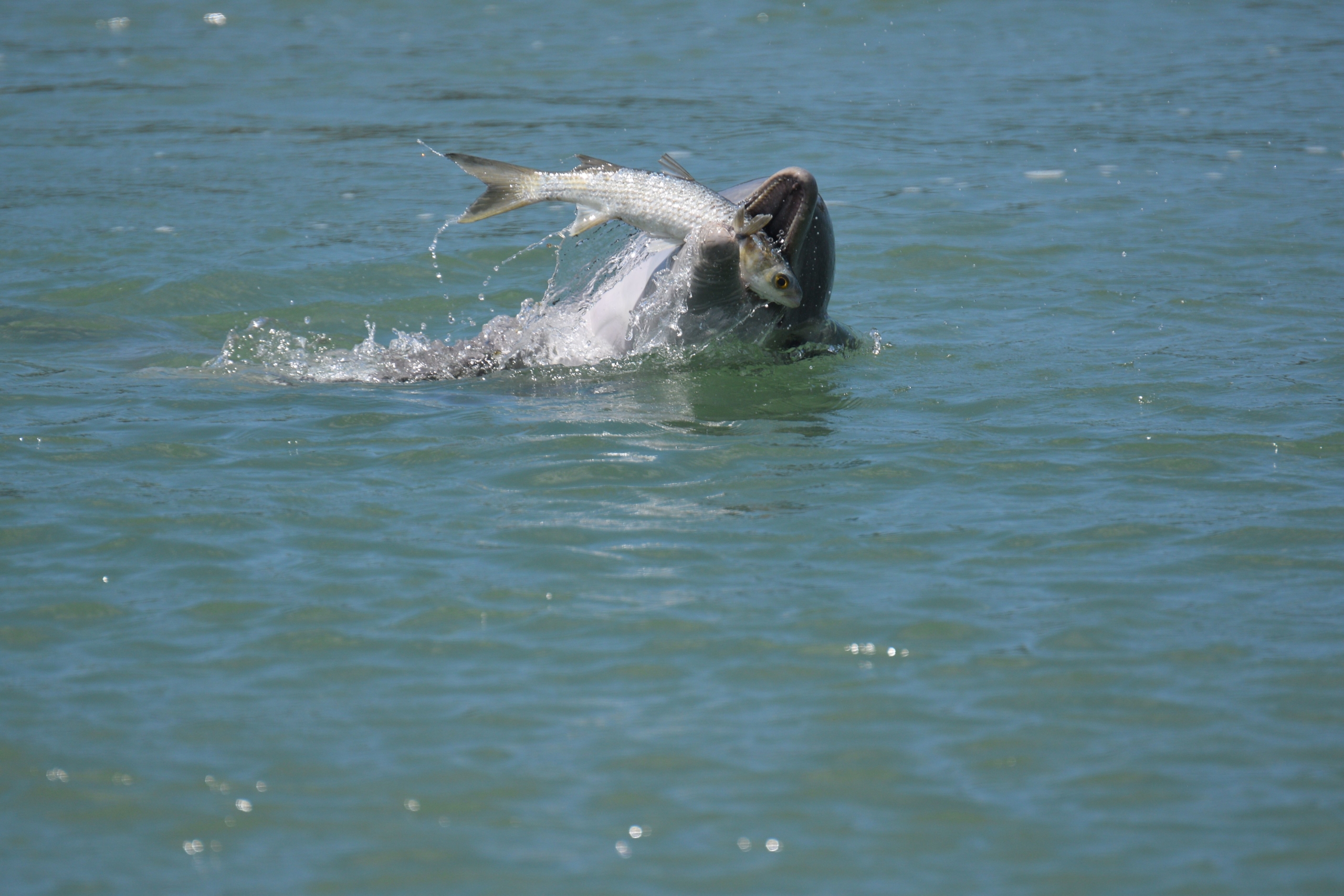When the Prey is Gone
Gaining a fuller understanding of dolphins also means studying how they interact with their environment, including learning about one of the main ecological drivers for their behavior: prey availability.
A new study published in the journal Frontiers in Marine Science has taken the first step in identifying how the dolphins’ prey community changes during red tide blooms and what that could mean for resident dolphin populations.
Since 2004, the SDRP has been conducting catch-and-release purse seine fish surveys in the shallow seagrass meadows that are important feeding grounds for Sarasota Bay dolphins. The surveys —10 sets per month during January-March and 10 per month during June-September — provide information on the relative abundance of dolphin prey fish in Sarasota Bay. Fish are brought aboard, identified by species, measured and then released alive.
Through previous studies, we know that the 10 most popular prey species for dolphins are pinfish (Lagodon rhomboides), pigfish (Orthopristis chrysoptera), scaled sardine (Harengula jaguana), Atlantic threadfin herring (Opisthonema oglinum), ladyfish (Elops saurus), mullet (Mugil spp.), sheepshead (Archosargus probatocephalus), spot (Leiostomus xanthurus), spotted seatrout (Cynoscion nebulosus), and Gulf toadfish (Opsanus beta). Of these species, dolphins prefer the soniferous — or sound-producing — pigfish, spot, spotted seatrout, and Gulf toadfish.
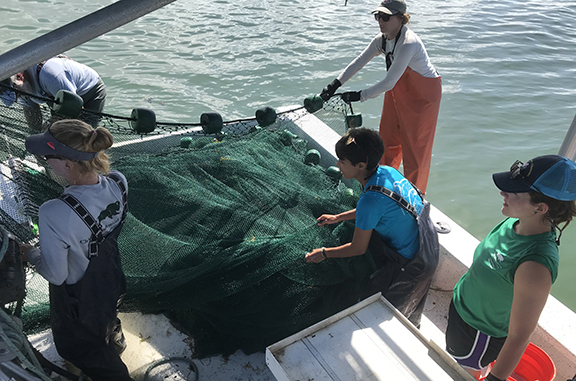
Over the years that the SDRP has been conducting these surveys, red tide harmful algal blooms caused by the toxic dinoflagellate Karenia brevis have periodically occurred along Florida’s west coast, resulting in massive fish kills and the deaths of marine mammals, seabirds, sea turtles and other marine animals.
While previous studies have suggested that K. brevis blooms play an important role in the dynamics and structure of dolphins’ ecosystem, specific effects on prey populations and alterations to predator-prey interactions remained unknown.
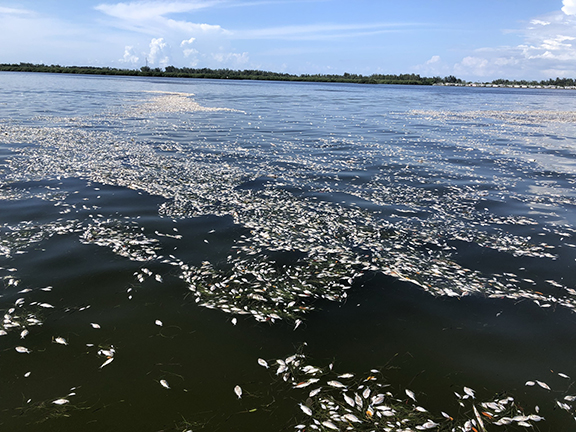
Through the study “Effects of Multiple Karenia brevis Red Tide Blooms on a Common Bottlenose Dolphin (Tursiops truncatus) Prey Fish Assemblage: Patterns of Resistance and Resilience in Sarasota Bay, Florida,” SDRP began the work of teasing out what happens in a resident dolphin community when the abundance and structure of the prey community changes.
Looking at eight red tide blooms that occurred during the study period, researchers found that the effects on dolphin prey varied by bloom intensity, the season when the bloom occurred, and how often blooms happened in succession.
“We found significant and distinct short-term shifts in the structure of the prey fish community during blooms no matter which month they occurred in,” said the study’s lead author Elizabeth Berens McCabe, SDRP Research Associate-Ecologist. “We also found sudden and steep declines in the abundance of most prey species, including soniferous (noise-making) species during bloom conditions. Prey fish appear to be less resistant to summer blooms than to blooms occurring in the winter months.”
Additional findings included that:
- The ecological effects of blooms on prey fish species were more variable in the winter months.
- The prey fish community showed resilience to bloom events, typically rebounding within about a year following the end of a bloom.
- Small, schooling clupeid species (Atlantic threadfin herring and scaled sardine) increased in abundance during bloom events.
- While non-soniferous clupeid species remained available during blooms — likely making them an important prey source — they are also less energy dense — that is, have fewer calories per fish. That means individual dolphins are likely working harder to catch more fish to meet their energy needs.
The study also raised other avenues for investigation to help uncover some of the indirect effects of red tide events on dolphins: Are dolphins changing where and how they forage? Using different resources or habitats? What about their interactions with their only predators, sharks?
“Sharks feed on stingrays in our study area, and ray abundance declined with the 2018-19 red tide ,” said Dr. Randy Wells, Director of the SDRP and a co-author on the study. “The bloom coincided with increases in the frequency of shark bites on resident Sarasota Bay dolphins. We also saw elevated rates of disappearances of young-of-the-year calves. Does that mean sharks were targeting dolphins because one of their typical prey items had declined? That’s an area we need to continue to investigate, and ongoing studies by our postdoctoral fellow Krystan Wilkinson will tell us more about local shark diets.”
Understanding how different red tide events affect ecological dynamics is important for effective species management, Wells said. “Are there different strategies that resource managers can use to ensure that the dolphin population can recover from a red tide bloom? By understanding how the dynamics change, we can help them address that question.”
- Read the full study: https://www.frontiersin.org/articles/10.3389/fmars.2021.711114/full#h1
- Additional co-authors: Christina N. Toms, Aaron A. Barleycorn, Krystan A. Wilkinson, SDRP, and Valeriy I. Palubok, Mote Marine Laboratory and Aquarium.
- Citation: Berens McCabe, E. J., R. S. Wells, C. Toms, A. Barleycorn, K. A. Wilkinson, and V. Palubok. 2021. Effects of multiple Karenia brevis red tide blooms on a common bottlenose dolphin (Tursiops truncatus) prey assemblage: Patterns of resistance and resilience in Sarasota Bay, Florida. Frontiers in Marine Science, Marine Conservation and Sustainability, Special Topic: The dolphins of Sarasota Bay: Lessons from 50 years of research and conservation, 8:711114. DOI: 10.3389/fmars.2021.711114
Primary funding for the study was provided by the Chicago Zoological Society and the Charles and Margery Barancik Foundation. Additional funding was provided by the Batchelor Foundation, Mote Scientific Foundation, NOAA’s Fisheries Service, Harbor Branch Oceanographic Institution’s Protect Wild Dolphins Program, Florida’s State Wildlife Grants Program, and Florida’s Fish and Wildlife Research Institute.
